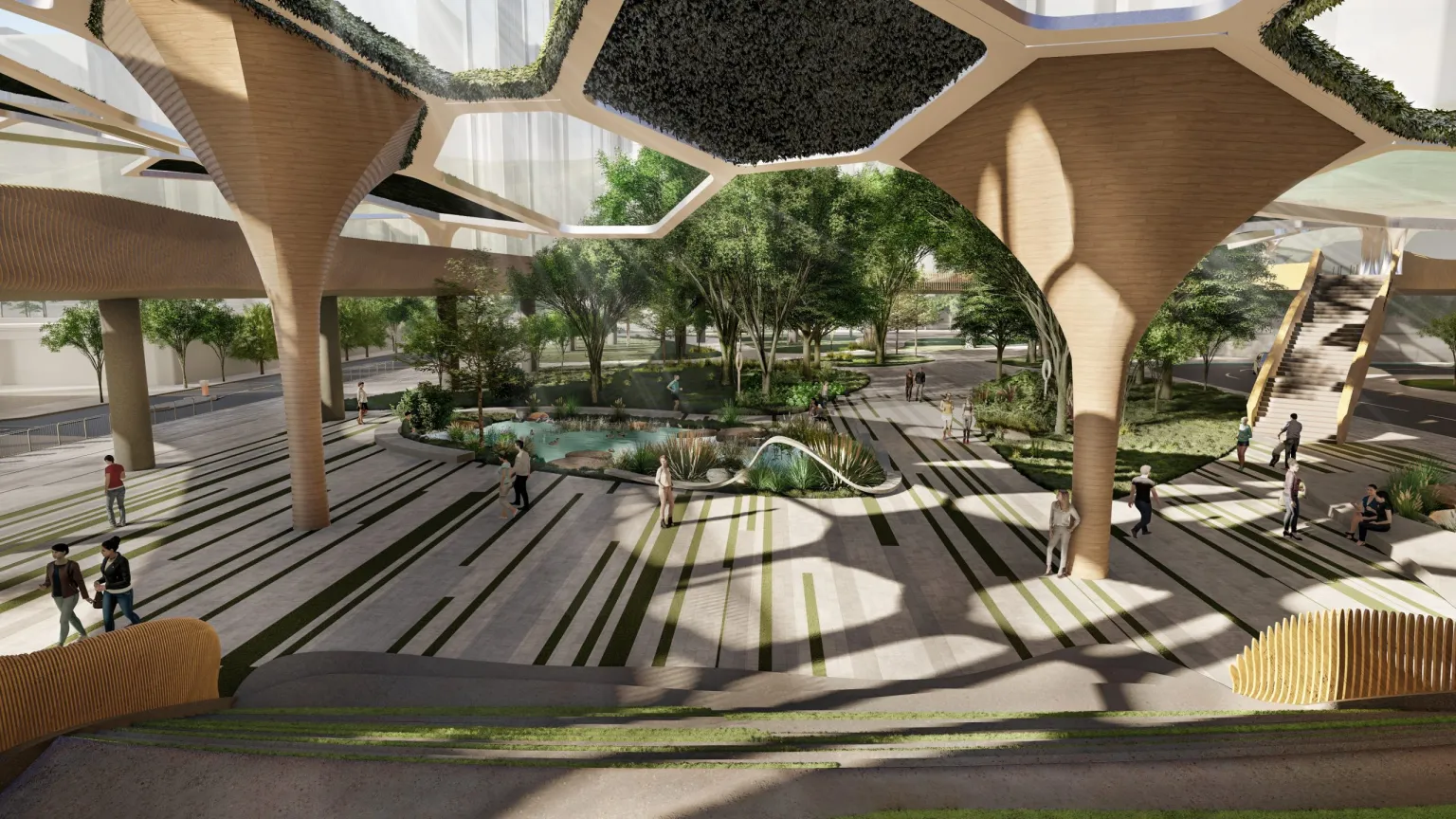The Relationship Between Architecture And Climate Change Adaptation - Designing For Resilience
The relationship between architecture and climate change adaptation has become increasingly important in recent years. As climate change continues to have a big effect on our environment, architects and designers are being forced to think about how their work can help reduce its effects and help us adapt to them.
Author:George EvansMar 21, 2023779 Shares111.2K Views

The relationship between architecture and climate change adaptationhas become increasingly important in recent years. As climate change continues to have a significant impact on our environment, architects and designers are being forced to consider how their work can contribute to mitigating and adapting to its effects.
The built environment is responsible for a significant portion of greenhouse gas emissions and energy consumption, and therefore has a crucial role to play in reducing our carbon footprint and increasing our resilience to climate change.
In this article, we will explore the relationship between architecture and climate change adaptation, and the various strategies and techniques that architects are employing to create more sustainable and resilient buildings.
The Impact Of Climate Change On Architecture
Climate change has a direct impact on architecture in various ways. Rising temperatures, for example, can lead to increased demand for cooling systems, which account for a significant portion of energy consumption in buildings.
Extreme weather events, such as floods and hurricanes, also pose significant challenges for architects as buildings must be designed to withstand these events while minimizing damage to the structure and occupants.
Furthermore, the design of buildings can affect the urban heat island effect, which is the phenomenon where urban areas experience higher temperatures than their rural counterparts due to the heat absorbed by buildings and other urban infrastructure.
By incorporating green roofs and walls, architects can reduce the heat island effect and provide additional benefits such as improved air quality and increased biodiversity.
The Role Of Architecture In Climate Change Adaptation
One of the key roles of architecture in climate change adaptation is to design and construct buildings that are more energy-efficient and sustainable.
This includes incorporating features such as green roofs, solar panels, and efficient HVAC systems to reduce energy consumption and greenhouse gas emissions.
Another important aspect of architecture in climate change adaptation is designing buildings that are resilient to extreme weather events such as storms, floods, and heat waves.
This may involve elevating buildings in flood-prone areas, using materials that are more resistant to damage, and designing structures that can withstand high winds and other extreme weather conditions.
Architecture also plays a critical role in creating more sustainable and resilient communities. For example, architects can design public spaces that are more climate-responsive and incorporate features such as green infrastructure and permeable surfaces to help manage stormwater runoff.
They can also work with community stakeholders to develop climate action plans and strategies for reducing greenhouse gas emissions and adapting to the impacts of climate change.
Ultimately, the role of architecture in climate change adaptation is to create buildings and communities that are more resilient, sustainable, and adaptive to the challenges of a changing climate.
By incorporating climate-conscious design principles into their work, architects can help to mitigate the impacts of climate change and build a more sustainable future for us all.

Climate Adaptation & Landscape Architecture
The Importance Of Collaboration In Climate Change Adaptation
Climate change adaptation is a complex and urgent challenge that requires a multi-disciplinary approach.
Collaboration is crucial in addressing this challenge, as it involves the integration of knowledge, skills, and resources from various sectors and stakeholders.
In the field of architecture, collaboration is essential in designing and building resilient and sustainable structures that can withstand the impacts of climate change.
Architects, engineers, builders, urban planners, and policymakers must work together to incorporate climate change adaptation strategies into the built environment.
This requires a shared understanding of the potential risks and vulnerabilities associated with climate change, as well as the opportunities for innovation and creativity in addressing these challenges.
One of the key benefits of collaboration in climate change adaptation is the sharing of knowledge and expertise. By working together, stakeholders can learn from each other's experiences and insights, and develop innovative solutions that are informed by a diverse range of perspectives.
Collaboration can also help to build trust and foster partnerships between different sectors and stakeholders, which is critical in achieving collective action and creating resilient communities.
Another important aspect of collaboration in climate change adaptation is the involvement of local communities and stakeholders.
Architects and planners must engage with community members to understand their needs, values, and priorities, and to ensure that their voices are heard in the decision-making process.
This can lead to more effective and equitable solutions that are tailored to the specific needs of the community.
Challenges In Climate-Adaptive Architecture
While architecture plays a significant role in climate change adaptation, it is not without its challenges. One of the main challenges is the lack of awareness and understanding of the impact of architecture on climate change.
Architects, building owners, and developers may not be aware of the importance of designing and constructing buildings that are energy-efficient and resilient to climate change impacts.
Another challenge is the lack of regulations and policies that promote climate-adaptive architecture. Without proper guidelines and standards, buildings may not be designed to withstand extreme weather conditions, and they may not be equipped with the necessary technology to reduce energy consumption and carbon emissions.
Furthermore, there is a need for architects to incorporate climate change adaptation strategies in the early stages of the design process.
This requires collaboration with other stakeholders, including engineers, environmentalists, and urban planners, to ensure that buildings are not only sustainable but also resilient to climate change.
Finally, the cost of implementing climate-adaptive architecture can be a significant challenge, particularly for smaller buildings and low-income communities.
However, it is important to note that the long-term benefits of sustainable and resilient buildings outweigh the initial costs, as they reduce energy consumption, decrease carbon emissions, and minimize the risk of damage from climate change impacts.
Despite these challenges, architecture has the potential to play a crucial role in climate change adaptation, and architects have a responsibility to design and construct buildings that are resilient to climate change impacts.
People Also Ask
How Can Architecture Help With Climate Change Adaptation?
Architecture can help with climate change adaptation by incorporating sustainable design practices that reduce energy consumption, such as the use of renewable energy sources, passive heating and cooling techniques, and green roofs.
Buildings can also be designed to be more resilient to extreme weather events, such as floods, hurricanes, and heatwaves.
What Is Climate-responsive Architecture?
Climate-responsive architecture is an approach to building design that takes into account local climatic conditions and adapts to them in order to create comfortable, healthy, and energy-efficient buildings.
This approach can involve the use of natural ventilation, shading, thermal insulation, and other strategies that respond to the local climate and minimize the building's environmental impact.
How Can Architects Promote Sustainable Development?
Architects can promote sustainable development by designing buildings that are energy-efficient, incorporate green materials, and use renewable energy sources.
They can also work with clients and communities to promote sustainable practices, such as recycling, reducing waste, and conserving water.
What Are Some Examples Of Sustainable Architecture?
Some examples of sustainable architectureinclude buildings that incorporate green roofs, passive solar design, and renewable energy sources such as solar panels and wind turbines.
Sustainable architecture can also involve the use of recycled and non-toxic materials, and designs that promote natural ventilation and lighting.
How Can Architecture Help Reduce Carbon Emissions?
Architecture can help reduce carbon emissions by incorporating sustainable design practices that reduce energy consumption and promote the use of renewable energy sources.
Buildings can be designed to be more energy-efficient by using passive heating and cooling techniques, insulating walls and roofs, and using natural lighting. Architects can also promote the use of renewable energy sources such as solar panels and wind turbines.
Final Words
The relationship between architecture and climate change adaptation is a critical one that needs to be given attention. Architects have a vital role to play in addressing the challenges of climate change by designing buildings that are environmentally responsible, energy-efficient, and sustainable.
By incorporating climate-responsive design strategies and technologies, architecture can make a significant contribution to climate change adaptation efforts. The need for sustainable and resilient designhas become increasingly urgent, and architects have a responsibility to respond to this challenge.
By working together with other professionals, policymakers, and communities, architects can help create a built environment that is both functional and environmentally sustainable, and that supports a healthy and prosperous future for all.

George Evans
Author
George Anderson, an exceptional architectural designer, envisions and brings to life structures that transcend the realm of imagination. With an unwavering passion for design and an innate eye for detail, George seamlessly blends form and function, creating immersive spaces that inspire awe.
Driven by a deep appreciation for the interplay of space, light, and materials, George's innovative approach redefines the possibilities of architectural design. His visionary compositions leave an indelible mark, evoking a sense of wonder and transforming the built environment.
George Anderson's transformative designs and unwavering dedication continue to shape the architectural landscape, pushing the boundaries of what is possible and inspiring generations to come.
Latest Articles
Popular Articles